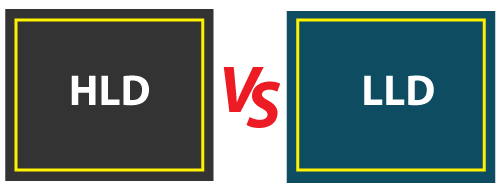Difference Between HLD and LLDIn this section, we are going to discuss the difference between HLD and LLD; and see the brief introduction between them. What is HLD?The HLD stands for High-Level Design, where the designer will only focus on the various models, like:
The solution architect develops the High-level design, which is used to specifies the complete description or architecture of the application. The HLD involves system architecture, database design, a brief description of systems, services, platforms, and relationships among modules. The HLD is also known as macro-level or system design. It changes the business or client requirement into a High-Level Solution. The High-level design is created before the Low-Level Design. What is LLD?The LLD stands for Low-Level Design, in which the designer will focus on the components like a User interface (UI). The Low-level design is created by the developer manager and designers. It is also known as micro-level or detailed design. The LLD can change the High-Level Solution into a detailed solution. The Low-level design specifics the detailed description of all modules, which implies that the LLD involves all the system component's actual logic. It goes deep into each module's specification. The Low-level design is created after the High-Level Design. HLD vs LLDIn the below table, we have discussed some significant comparisons between high-level design and low-level design. 
ConclusionIn this section, we have understood the major difference between high-level and low-level designs. And we can conclude that the high-level design specifies the complete report and planning of the particular software product or application. On the other hand, the low-level design specifies the in-detail report of all the modules. In Software Development Life Cycle's design phase, the members of design team, client team, and review teams are included in high-level designing. On the other hand, the design team and operation teams will prepare the low-level Design. Finally, we can say that both HLD and LLD are essential part of design phase in the SDLC process for any software product.
Next TopicBRS vs SRS
|
 For Videos Join Our Youtube Channel: Join Now
For Videos Join Our Youtube Channel: Join Now
Feedback
- Send your Feedback to [email protected]
Help Others, Please Share










